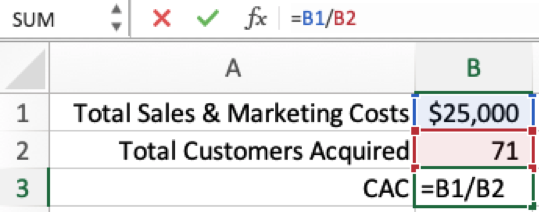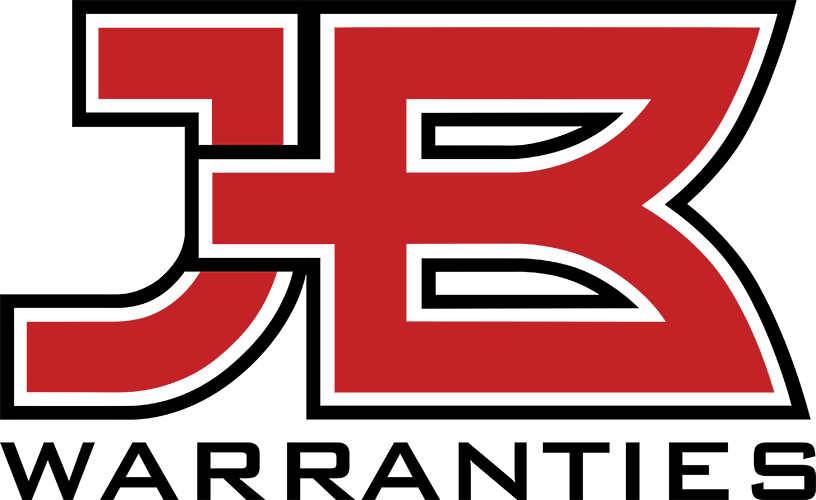
If you’ve been working in the HVAC industry for a while, you’ve probably heard that the cost to acquire a new residential customer is between $200 to $300. Where did that new customer acquisition cost come from? Contractors need to work with real numbers to plan for their business, not just something your buddy’s dad’s cousin mentioned to your sister’s husband.
To help business owners understand the actual cost to acquire a new customer, we commissioned a study to uncover the real costs that HVAC contractors face when attracting new residential business. In this post, we’ll share what we learned.
What Is The Cost Of Acquiring A New Residential Customer In The HVAC Industry?
The new customer acquisition cost for a residential HVAC customer is $350, according to Decision Analyst, in the 2019 study commissioned by JB Warranties.
Around 13.3 million U.S. owner-occupied residential homes will need HVAC system service within the next year. Of that population, almost 40 percent have home warranties or existing contractor relationships, leaving the pool of potential new customers at 7.93 million. Divide the $2.78 billion that the HVAC industry spends to attract new customers each year by the pool of potential new customers, and you get an average estimated spend of $350 per new customer.
Why You Should Know Your Customer Acquisition Cost (CAC)
 Of course, there are obvious reasons why you should know the typical new customer acquisition cost. You need this information to help you budget for your HVAC or plumbing sales and marketing efforts.
Of course, there are obvious reasons why you should know the typical new customer acquisition cost. You need this information to help you budget for your HVAC or plumbing sales and marketing efforts.
Knowing your Customer Acquisition Cost (CAC) isn’t just about crunching numbers—it’s about understanding the health of your business. For HVAC and plumbing contractors like you, every dollar counts, whether it’s paying your techs, investing in tools, or simply keeping the lights on. Think of CAC as a guidepost, helping you measure if your marketing efforts are paying off.
Imagine you’re spending a few thousand dollars a month on ads or flyers. You’d want to know how many new customers those dollars bring in, right? By breaking down your CAC, you can determine if you're getting a solid return on your investment (ROI). And that’s especially important in trades like HVAC and plumbing, where the competition can be stiff, and margins are often thin. Knowing this cost keeps you in control, helping you grow without wasting money on efforts that aren’t working.
Let’s look at a couple of other reasons to keep tabs on this number.
To Assess the Health of Your Sales & Marketing Efforts
If your cost to acquire new customers is way above the HVAC or plumbing industry average, ask yourself, “why?” Is it due to the location where you operate, or does the cost point to an issue in your marketing or sales efforts?
Look at your conversion rates on your latest campaign compared to cost. Has it generated a good return on marketing investment (lots of qualified leads)?
Maybe your team is closing too few deals? If your marketing efforts are attracting lots of qualified leads, but very few closed opportunities, your cost per new customer goes up. You may be looking at a sales training issue, a pricing problem or another issue that potential customers think is missing in your offer or service delivery.
To Get Your Company Focused on Customer Retention
Another incredibly important reason to be aware of the industry average cost to acquire new residential customers is this; to remind you why you need to retain customers. It costs much less to retain business than to generate net new business.
Decision Analyst found that residential consumers will spend an average of $400 per service call. If you spend $350 to acquire a new customer who needs a service call, most of that sale goes to cover your acquisition costs. You still want to attract new customers, but this point illustrates why it’s so important to nurture your existing relationships. The better your retention rates, the better your profit.
How to Calculate Your New Customer Acquisition Cost (CAC)
If you’d like to compare your customer acquisition costs to the findings from Decision Analyst, here’s a simple equation to help you calculate your CAC.
CAC = Total sales and marketing costs ÷ number of customers acquired
Like to see how you might use it in your favorite spreadsheet program?

Now you can benchmark your CAC against the HVAC or plumbing industry standard.
If you want to go “next level” in improving your sales and marketing spend, learn about optimizing your customer lifetime value (LTV) and getting a nice CAC/LTV ratio for your company. That means you can make more money than you’re spending on sales and marketing. Who doesn’t want that?
But there’s more to it than just plugging numbers into a formula. HVAC and plumbing contractors often deal with fluctuating expenses. Maybe it’s the cost of tools, paying for certifications, or unexpected vehicle maintenance. These are all part of running a trade business but can make keeping your marketing budget on track tricky. You don’t want to overspend on Facebook ads and realize later that it wastes the funds you need to maintain your equipment fleet. By regularly checking your CAC, you can adjust your strategy before it impacts your bottom line.
Factors That Can Affect Your CAC
Let’s dig deeper into what might drive your CAC up or down. As an HVAC or plumbing contractor, your customer base can vary greatly depending on the season, location, and service demand. Here’s how these factors could affect your CAC:
-
Seasonality: In HVAC, your phone might ring off the hook during peak seasons, like when the heat kicks in during summer or the cold in winter. Plumbing also sees seasonal spikes, especially when pipes freeze. During these times, marketing might not need to work as hard, so your CAC could be lower. But in off-peak months, you may spend more on ads or promotions to keep those leads coming in.
-
Competition: If you're in an area where HVAC and plumbing companies are a dime a dozen, you might be in a bidding war for leads. That could drive up your CAC because you’ll need to spend more to stand out—whether that’s on digital ads, local sponsorships, or direct mail campaigns.
-
Lead Source: Not all leads are created equal. Some come in hot (maybe someone’s AC just broke down), while others need nurturing (those shopping around for an upgrade next season). The source of your leads matters. For example, if you’re investing heavily in pay-per-click ads, those leads tend to cost more than referrals or word-of-mouth. Tracking where your leads are coming from helps you refine your marketing spend.
How to Lower Your CAC
Every contractor wants to lower their CAC without cutting corners. The trick is finding what works best for your business. Here are some tried-and-true methods that can make a real difference:
-
Focus on Referrals: One of the easiest ways to lower CAC is to tap into your existing customer base. If you’ve been in business for a while, chances are you’ve got a list of loyal clients who trust your work. Offering referral incentives (like discounts on future services) can turn happy customers into your marketing team without spending big bucks on new ads.
-
Invest in Your Online Presence: Customers search online for you, whether you’re HVAC or plumbing. If your website isn’t easy to find, you’re leaving money on the table. A well-optimized website can improve your search engine ranking, making it easier for potential customers to find you without paying for expensive ads. Add a blog to answer common customer questions (e.g., “How often should I change my furnace filter?” or “Why is my toilet leaking?”). Content like that doesn’t just show your expertise—it attracts organic traffic, lowering your CAC over time.
-
Retargeting and Follow-ups: Don’t just let leads slip through the cracks. Follow up with people who showed interest but haven’t booked service yet. Maybe they clicked on your ad or visited your website but didn’t call. A well-timed email or phone call could convert that warm lead into a customer, reducing your CAC by getting more mileage out of your existing marketing efforts.
The Role of Repeat Business in Reducing CAC
 Acquiring new customers is costly, but what about keeping the ones you’ve already got? This is where HVAC and plumbing contractors have a real edge. If you do a good job installing an HVAC system or fixing a plumbing issue, chances are those customers will call you back when they need maintenance or repairs.
Acquiring new customers is costly, but what about keeping the ones you’ve already got? This is where HVAC and plumbing contractors have a real edge. If you do a good job installing an HVAC system or fixing a plumbing issue, chances are those customers will call you back when they need maintenance or repairs.
Repeat customers can be a goldmine because you don’t have to spend nearly as much to get them through the door. Plus, the trust you’ve built makes them more likely to recommend your services to friends and family, further lowering your CAC through referrals. It’s why so many contractors invest in maintenance plans—locking in long-term customers while keeping your marketing costs down.
Conclusion? Balance Acquisition with Retention
You can never stop your sales and marketing efforts to gain new customers. Even your most loyal customers move on due to circumstance or choice. A robust acquisition strategy helps you replace lost business. However, what really keeps you on the right path to earning more revenue is customer loyalty.
When it comes to repeat business, you don’t have to spend as much to draw these customers back in. But you do need to work on building great relationships that make them want to come back for more.
Our tips for retaining your best residential HVAC or plumbing customers include:
- Routine communication about your business or new services
- Holiday and special occasion cards
- Special customers-only offers and deals
- HVAC and plumbing extended warranty programs for contractors to ensure customers have peace of mind about their equipment and service
Learn More
Learn more about the benefits of offering extended HVAC warranties to your customers, then register to become a JB Warranties dealer.
Nick Ahrens
National Account Manager






